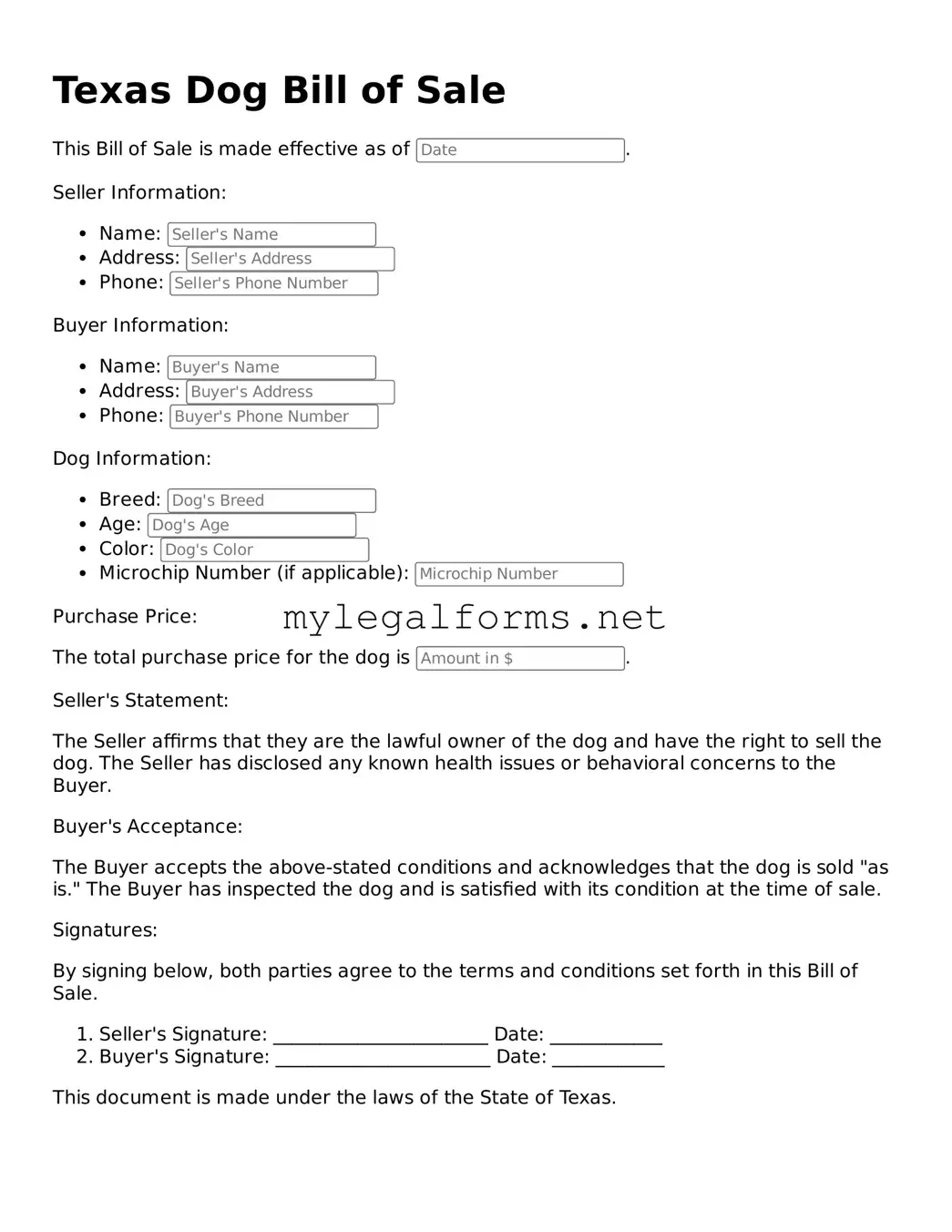When individuals decide to sell or purchase a dog in Texas, they often rely on the Texas Dog Bill of Sale form to formalize the transaction. However, several common mistakes can lead to confusion or legal issues down the line. Understanding these pitfalls can help ensure a smoother process for both parties involved.
One frequent error is failing to provide complete information about the dog being sold. Sellers should include vital details such as the dog's breed, age, and health status. Omitting this information can lead to misunderstandings regarding the animal's condition or characteristics, potentially resulting in disputes after the sale.
Another mistake is neglecting to include the seller's and buyer's contact information. This oversight can create difficulties if either party needs to reach out after the transaction. Clear communication is essential, especially if any issues arise regarding the dog's health or behavior post-sale.
Many people also overlook the importance of signatures on the form. Both the seller and the buyer must sign the document to validate the transaction. Without these signatures, the bill of sale may not hold up in a legal context, leaving both parties vulnerable to potential claims.
Additionally, some sellers forget to specify whether the dog is being sold with any guarantees or warranties. Clearly stating whether the sale is "as is" or if any guarantees are provided can protect both parties. This clarity helps manage expectations and can prevent disputes related to the dog's health or behavior after the sale.
Another common mistake involves not keeping a copy of the completed bill of sale. Both the seller and the buyer should retain a copy for their records. This document serves as proof of the transaction and can be crucial if any issues arise later.
Finally, individuals sometimes fail to check local regulations regarding dog sales. Different municipalities may have specific laws or requirements that must be adhered to. Ignoring these regulations can lead to fines or other legal complications. It is essential to be informed about any local laws that may impact the sale.
